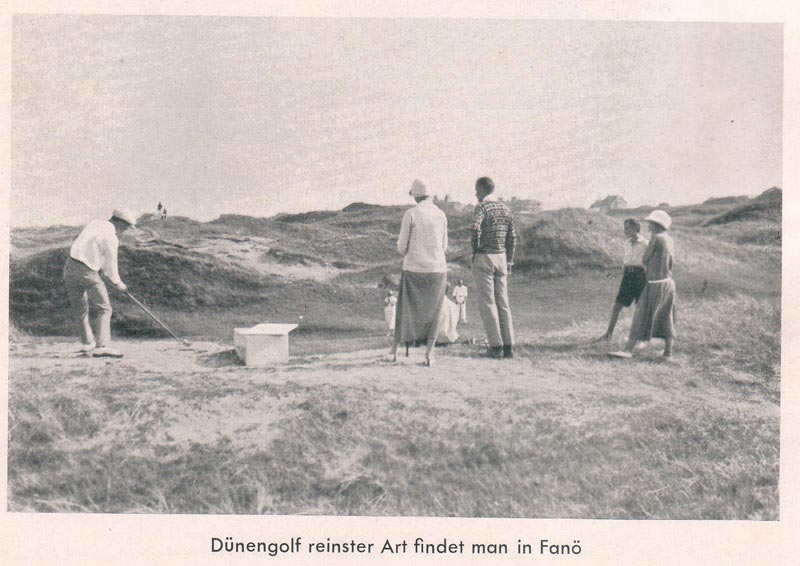Dunlop. Nonboe. Lassen.
These are the people that have shaped Fano into the varied, raw and fun 5,600 yard course that it is today, which raises several questions:
1) Who needs an architect when the natural features of a site are this good?
2) How can you NOT get a golf course architect when a site is this good?!

3) How nice is it to play a course that feels thoroughly fresh and original and doesn't remind you of any other course (no offense to all you architects that have built ~30 plus courses)? The same feeling of freshness resonated at Falsterbo as well.
4) Ala Ashdown Forest, it sure makes for a fine change of pace not to have stylishly ragged bunkers as a focal point. Far better just to talk/focus on the natural landscape.
5) I wouldn't be a pudge muffin if 1) I hadn't drank oceans of beer in Scandinavia (Fano beer is the best!) and 2) I could get out all the time and walk 18 holes in two hours like we did here. Give me 5,600 yards all day long if it gets you up and out into the great outdoors.
With the possible exception of the zany Narin & Portnoo, I have never quite seen a course cram so much character into a relatively short distance. Have you? What courses seemingly defy logic in making you like them so much? Perhaps Stonehaven as described by Finnegan (I haven't seen it)?
This bunkerless links is sure one for me. As the photographs indicate, we caught it on a great afternoon with about five other golfers scattered about the course. At something around 80 acres, I appreciate that a crowded day might temper one's enthusiasm (you can't blast into the fourth fairway to gain access to a front right hole at the third) but my hunch is that September is always a fabulous month to avoid crowds on a small island off the west coast of Denmark.
Of the eight courses that Joe and I played, Fano was the only one that we disagreed with on its relative merits to the other courses that we saw. Joe will tell you that because it was short, I loved it and I am a blind romantic. Blah blah blah. Playing the role of a strict school teacher, Joe contends, "When I see the unnatural routing, the lack of any width, the complete absence of bunkering (penal, strategic, directional or otherwise), the regrettably flat, little round greens (a few of which are positioned on disadvantaged land), and the ill-placed, unconstructed tees which in many cases aren't even sited, I think that any good holes are as much a product of chance as intelligent design. I see it as a great piece of land upon which rudimentary golf was laid out crudely."
So much for golf in the bracing fresh air!

I say ignore Joe's grumblings but please understand I am not suggesting that Fano is some George Thomas piece of architectural brilliance but rather it is exhilarating fun of the sort that is hard to find at too many courses. Certainly, mulling over the merits of a 5,600 yard course where you play from artificial mats as teeing areas is an interesting exercise as it puts in perspective what is important to you from the game of golf.
Still, the way the holes interact with nature - from blind drives over tall dunes like at the 14th to blind approach shots like at the 15th to heather covered mounds in front of greens like at the 3rd and 13th - the golfer is always given something appealing to accomplish. Yes, like Royal Ashdown, a few strategically placed bunkers would only add to the variety/challenge but they aren't there, so that's that.
Here is a 1931 photograph from Christoph Meister whose research was invaluable for this profile:

Few sites offer more natural features with which to contend - it gets my vote as a must play in Scandinavia. Even Joe the Curmudgeon (long hitter, 3 handicap, former Golf Digest panelist, you know the type

) says he very much looks forward to a return visit to Fano - and doesn't the desire for a return game really tell you all that matters about a course?
Cheers,